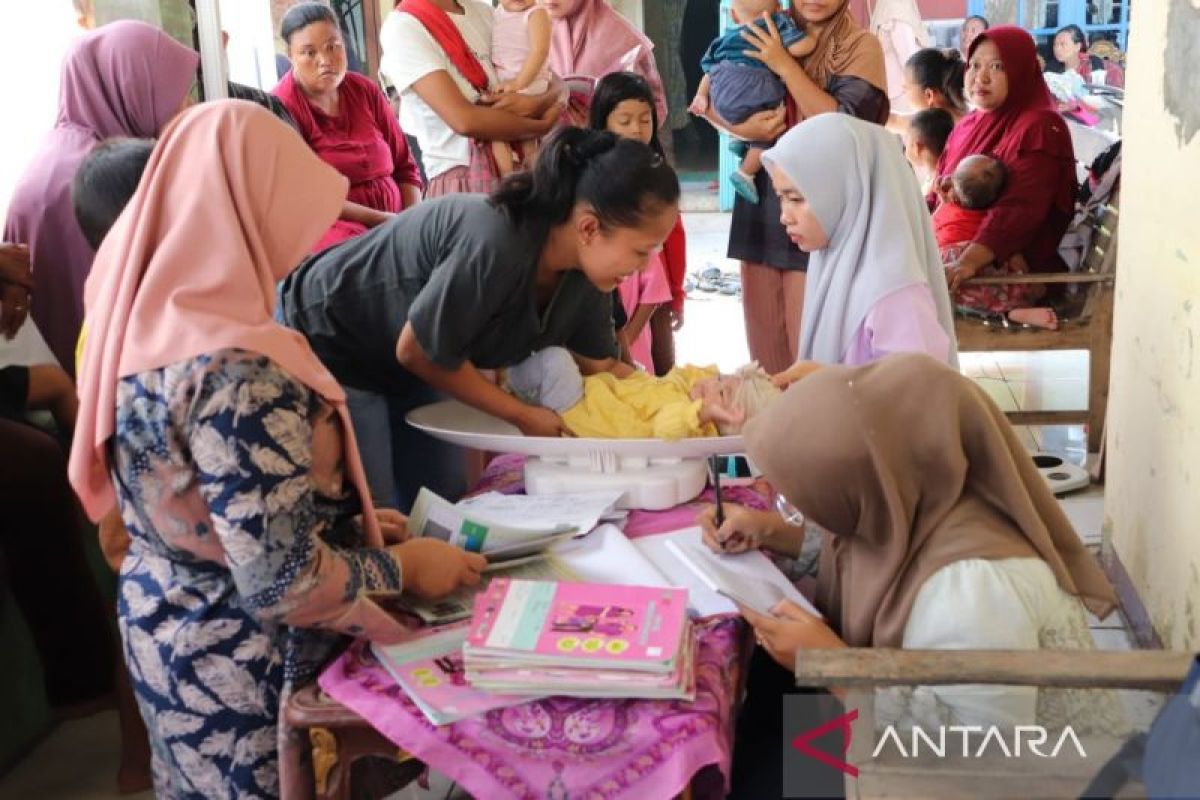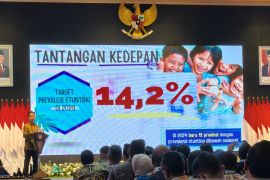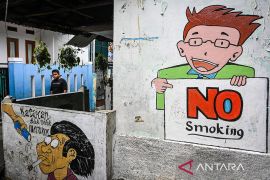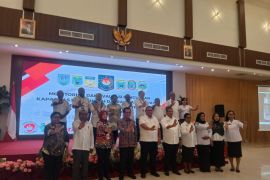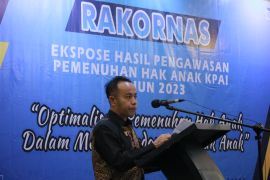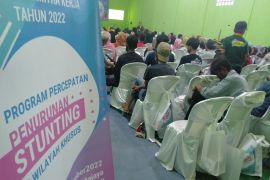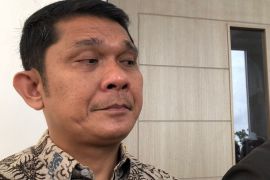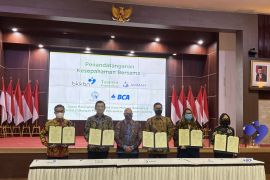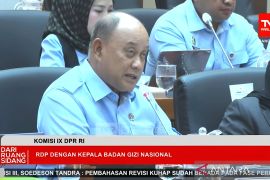In the 10 years from 2013 to 2023, Indonesia managed to bring down the stunting rate from 37.2 percent to 21.5 percent.
This year, the government is targeting to further lower stunting prevalence to 14 percent.
Several programs have been intensified — most of them focused on improved nutrition of mothers and children — with the formation of the stunting reduction acceleration team. The team was initially led by the 13th vice president Ma'ruf Amin.
In 2017, Amin determined leadership commitment and vision, campaign and communication on behavioral change, program convergence action, food and nutritional security, and integrated monitoring and evaluation as the five pillars of stunting prevention.
Nutritional interventions
Nutritional interventions are an important aspect of stunting reduction efforts. To check stunting, the government is carrying out specific and sensitive interventions.
Specific nutritional interventions directly address the causes of stunting, which usually include health factors such as food intake, infections, maternal nutritional status, infectious diseases, or environmental health.
There are nine types of specific nutritional interventions, including providing additional food to pregnant women and underweight toddlers; providing iron supplements to teenagers, women of childbearing age, and pregnant women; and promoting breastfeeding and counseling.
They further include conducting promotion and counseling on the provision of food for babies and children, managing malnutrition, growth monitoring and promotion, micronutrient supplementation, pregnancy checks, and immunization, as well as integrated management for sick toddlers.
Meanwhile, sensitive nutritional interventions are related to indirect causes of stunting, which exclude health issues. They are divided into four types—provision of drinking water and sanitation, nutrition and health services, increasing awareness of care and nutrition, and boosting access to nutritious food.
The government budget plays a crucial role in supporting the implementation of nutritional interventions.
In 2022, the Ministry of Finance allocated Rp44.8 trillion (around US$2.84 billion) to support stunting reduction acceleration.
It comprised a spending budget of Rp34.1 trillion (around US$2.16 billion) for 17 ministries and agencies, Rp8.9 trillion (around US$566 million) in physical special allocation funds (DAK), and Rp1.8 trillion (around US$114.2 million) in non-physical DAK for regional governments.
Meanwhile, in 2023, the stunting reduction acceleration budget for ministries and agencies was set at Rp30 trillion (around US$1.9 billion).
The central government also provided a budget for reducing stunting through the allocation of financial transfer funds to local governments amounting to Rp16.56 trillion (around US$1.05 billion). Village funds were also directed toward the stunting reduction acceleration program.
In addition to budget support, the government provides fiscal incentives to provincial and district/city governments for reducing stunting.
According to Finance Minister Sri Mulyani Indrawati, in 2023, the total fiscal incentives provided to regions with the best stunting reduction achievements reached Rp1.68 trillion (around US$106.9 million).
The fiscal incentives were given to 90 regions comprising 20 provinces, 30 cities, and 40 districts in 2022. Meanwhile, in 2023, such incentives were provided to 125 regions, and in September 2024, then vice president Amin provided fiscal incentives for stunting reduction acceleration to 130 regional governments.
Progress report
Based on the evaluation of the budget and development performance of the stunting acceleration program, as of February 15, 2023, the average achievement in specific intervention indicators exceeded the set target.
The percentage of pregnant women with chronic energy deficiency who received additional nutritional intake reached 89.1 percent, the proportion of pregnant women who consumed at least 90 iron supplements reached 87.1 percent, and adolescent girls consuming iron supplements stood at 46.4 percent.
In addition, 90 percent of under-five children with malnutrition were provided malnutrition management, and the growth and development of 78.3 percent of under-five children was monitored.
Furthermore, the proportion of malnourished under-five children who received additional nutritional intake reached 84.5 percent, and under-five children who received complete basic immunization 97.5 percent.
As for sensitive intervention results, based on Presidential Regulation Number 72 of 2021, the percentage of postpartum family planning services reached 52.6 percent, exceeding the target of 50 percent.
The percentage of unwanted pregnancies declined to 11 percent against the target of 16.5 percent, while the coverage of prospective couples who received health checks as part of marriage services reached 75.5 percent, higher than the target of 60 percent.
Furthermore, the proportion of households with access to clean drinking water in priority districts and cities reached 93 percent against the target of 95.9 percent.
Meanwhile, the percentage of households with access to clean sanitation in priority districts and cities reached 79.1 percent against the target of 82.1 percent.
In addition, the coverage of national health insurance contribution assistance reached 96.67 million people, close to the target of 96.8 million.
The coverage of families at risk of stunting receiving assistance reached 42.7 percent against the target of 30 percent, while the number of poor and vulnerable families receiving cash assistance reached the target of 10 million.
The percentage of targeted groups with good understanding of stunting in priority areas reached 74 percent, surpassing the target of 70 percent.
Then, the number of poor and vulnerable families receiving food assistance reached 18.8 million against the target of 18.8 million. And, the share of villages that ended open defecation reached 57 percent against the target of 50.6 percent.
Inclusive data
To make community interventions more accurate, there is a need for more inclusive stunting data.
In the policy or research context, inclusive data must include information from a variety of demographic, social, economic, and cultural backgrounds, without leaving any particular group unrepresented.
Unsorted data could potentially lead to inappropriate use of the stunting reduction budget.
At the provincial, district, and city levels, sorted data must be continuously updated annually and survey and census processes must not only be carried out at the national level but also at the district and city levels so that stunting reduction data can be more inclusive and sorting as detailed as possible.
Progress has been made in the collection of inclusive data, with the government carrying out Simultaneous Body Measurement and Intervention for Stunting Prevention in June 2024.
A total of 300,188 integrated health posts were involved in the intervention, which succeeded in significantly increasing the number of under-five children whose body measurements were put on record.
As part of the intervention, body measurements of 16,381,852 under-five children were taken. Of the total, nutritional problems, including malnutrition, severe malnutrition, wasting, weight faltering, and stunting, were detected in 5,807,312 children.
To support data collection, the involvement of cadres in carrying out body measurements and youth from the Family Planning Generation (GenRe) program in reducing stunting also needs to be stepped up.
Those working in the field need to receive more attention so that they can collect data that is more inclusive for designing accurate interventions to realize a stunting-free Indonesia.
Related news: Population Ministry must coordinate stunting: Minister Pratikno
Related news: Prevent stunting to realize Golden Indonesia: minister
Translator: Lintang Budiyanti, Raka Adji
Editor: Arie Novarina
Copyright © ANTARA 2024
